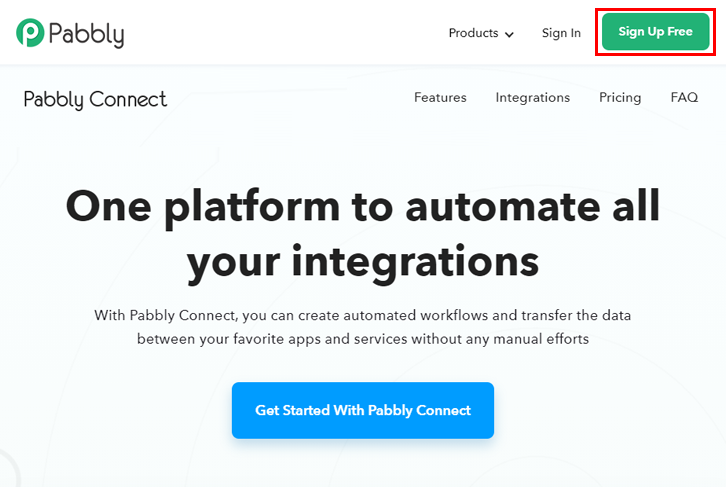Do you want to add your form responses to Google Sheets automatically?
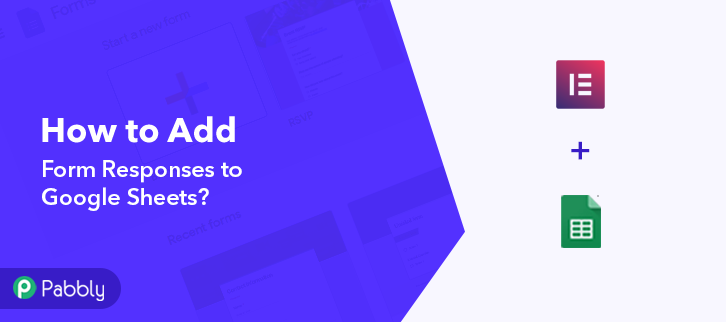
Well if your answer is yes then follow this article to explore the easiest way to implement this automation without coding. I’ll be using the Pabbly Connect service to establish a connection between Elementor and Google Sheets.
Pabbly Connect is an integration & automation service that connects multiple applications together to automate manual & repetitive tasks in real-time.
Besides, this will be a one-time setup & the created workflow on Pabbly Connect will take care of this automation afterwards.
Why Choose This Method Of Integration?
In contrast with other integration services-
- Pabbly Connect does not charge you for its in-built apps like filters, Iterator, Router, Data transformer and more
- Create “Unlimited Workflows” and smoothly define multiple tasks for each action
- As compared to other services which offer 750 tasks at $24.99, Pabbly Connect offers 50000 tasks in the starter plan of $29 itself
- Unlike Zapier, there’s no restriction on features. Get access to advanced features even in the basic plan
- Try before you buy! Before spending your money, you can actually signup & try out the working of Pabbly Connect for FREE
Before starting the procedure, let’s discuss the services a little. Elementor is a page builder plugin that is used to replace the basic WordPress editor with a live frontend editor. Whereas, Google Sheets is a smart online spreadsheet program.
By integrating Elemetor with Google Sheets we are going to add form response to Google Sheets. This way, whenever a form is submitted on Elementor the form details will automatically get added to a Google Sheet.
Additionally, you can also go through the video tutorial below for this integration.
Further, a template for this integration is also mentioned below to help you get started immediately. Click on the image below & use this workflow for your task automation. Additionally, check out the Marketplace to search other integrations & apps.
Now, fasten your seat belts as we’re going to discover the Elemetor and Google Sheets integration.
Step 1: Sign up to Pabbly Connect
Begin the procedure to add form responses to Google Sheets by visiting the Pabbly Connect website. Click on the ‘Sign-Up Free‘ button available on the top right corner of the page. Next, either use your existing Gmail account or simply register via new sign-up.
Step 2: Access Pabbly Connect
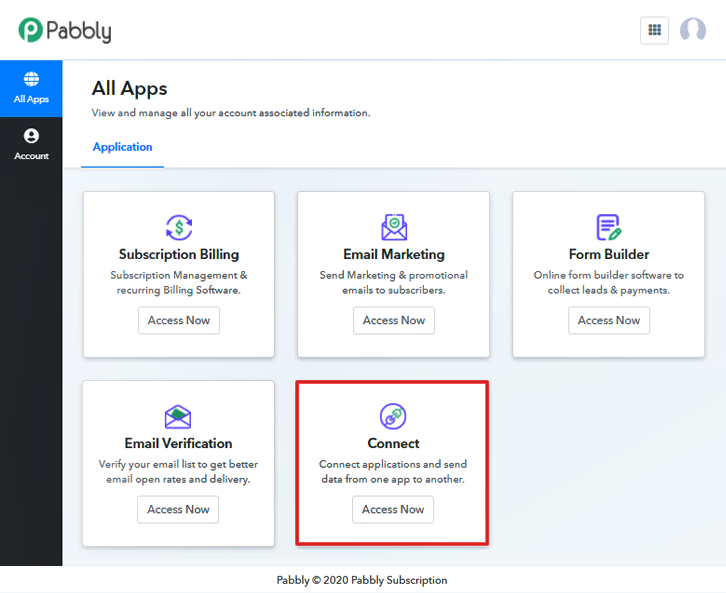
Once you are successfully logged in, click on the ‘Access Now’ button of the software ‘Connect’ amongst all the other Pabbly applications.
Step 3: Workflow for Elementor and Google Sheets Integration
(a) Start with a New Workflow
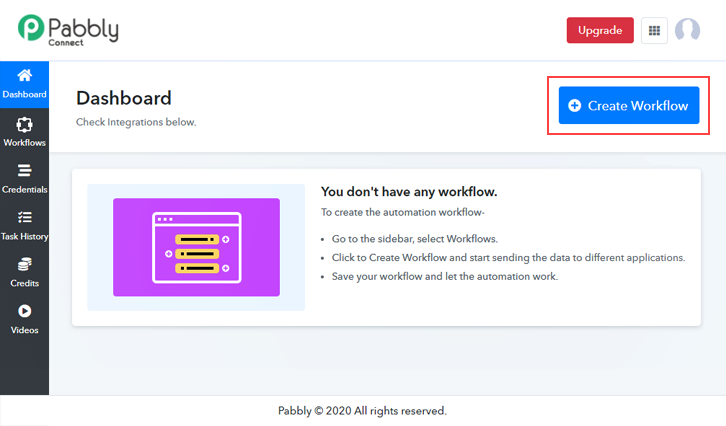
Further, start with creating a workflow for Elementor to Google Sheets integration & to do this click the ‘Create Workflow’ button available on the dashboard.
(b) Name the Workflow
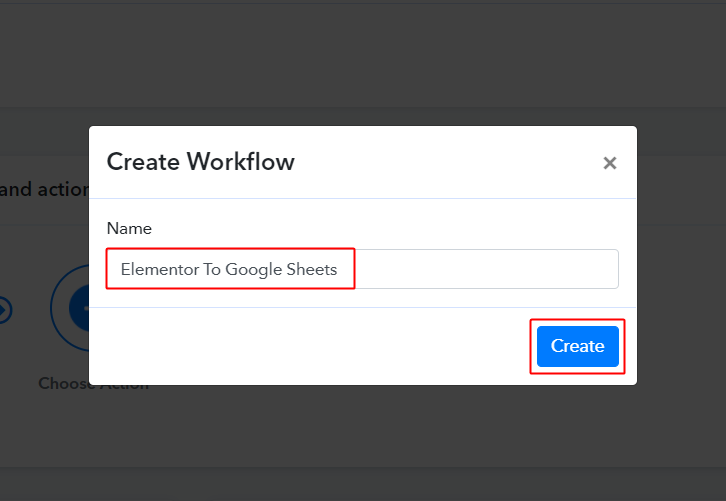
A window will pop up asking for the workflow name. Name your workflow as per your integration or use-case (for instance: Elementor To Google Sheets ). Lastly, click on the ‘Create’ button.
Step 4: Setting Trigger for Elementor to Google Sheets Integration
First, you’ll need to set up a trigger on the new Elementor form entries and then its respective action using Pabbly Connect.
(a) Select Application you want to integrate
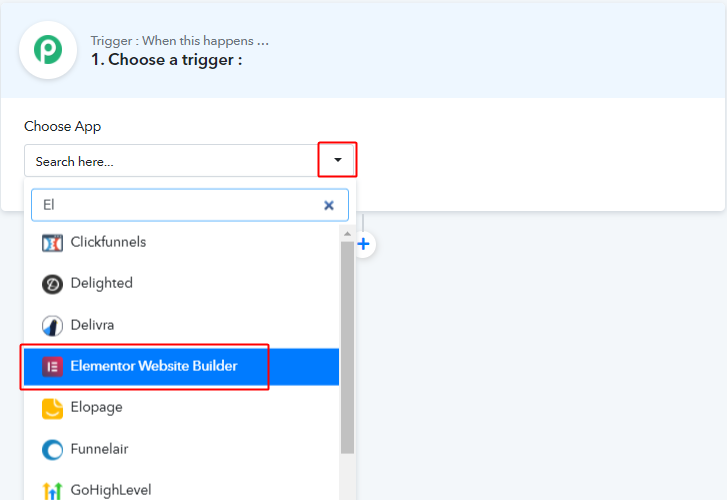
After naming the workflow, a page will open up along with the trigger settings.
Pick the ‘Elementor Website Builder’ app from the ‘Choose App’ drop-down choices.
(b) Select Event & Copy Webhook URL
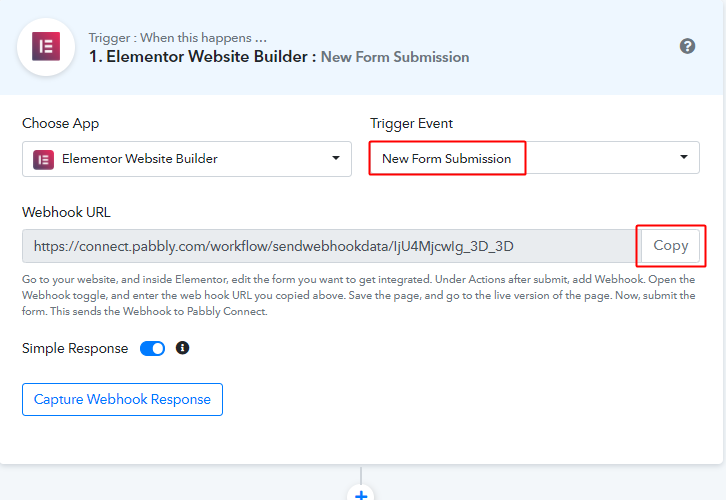
Select the event as ‘New Form Submission’ & then copy the webhook URL.
Step 5: Connecting Elementor to Pabbly Connect
(a) Open Form with Elementor
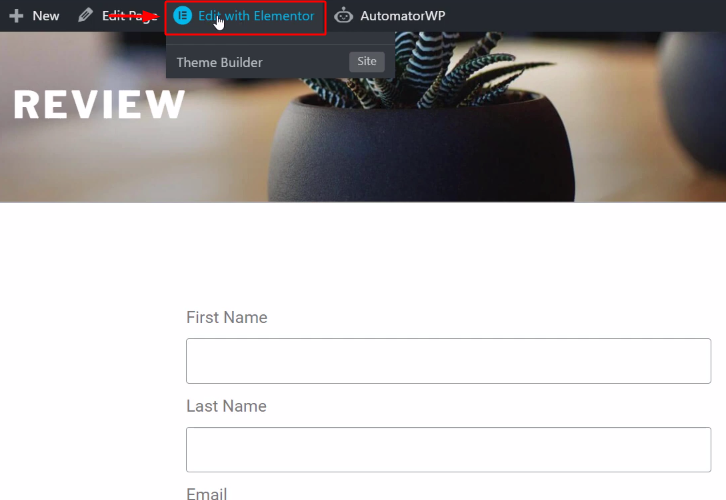
First, log in to your WordPress site where you are using the Elementor plugin. Then open the form in which you want to bring the automation in Elementor.
(b) Click on the Created Form
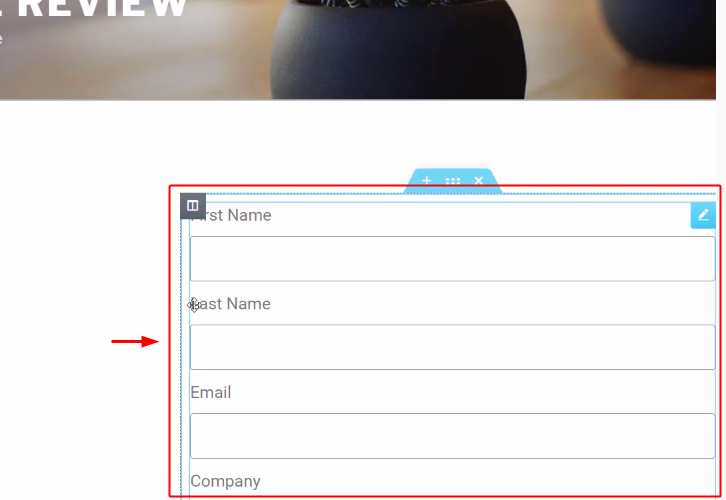
Next, click on the created form.
(c) Click on Action After Submit
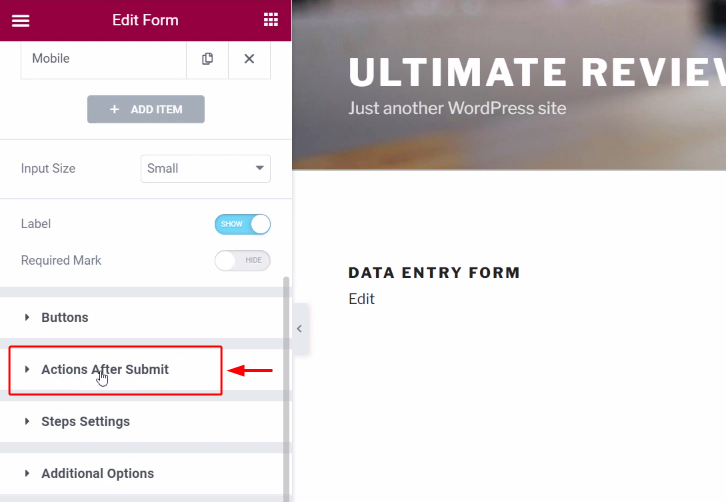
Now, scroll to the bottom of the left verticle menu and click on the ‘Action After Submit’ option.
(d) Add Action Webhook
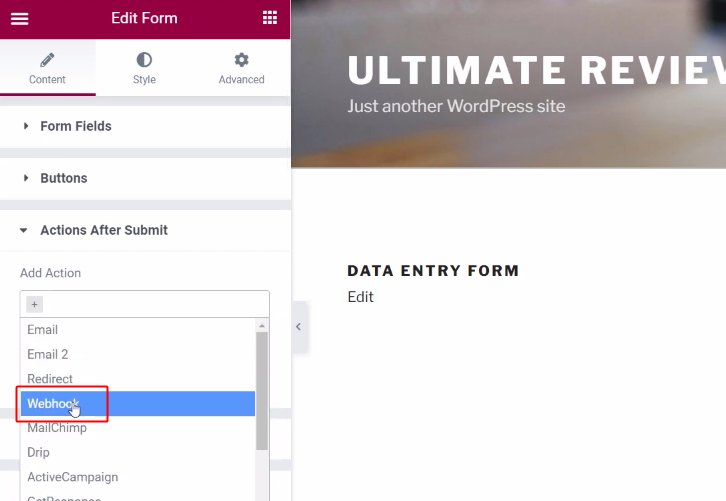
Next, select the ‘Webhook’ option from the Add Action drop-down.
(e) Paste the Webhook URL & Click on Update
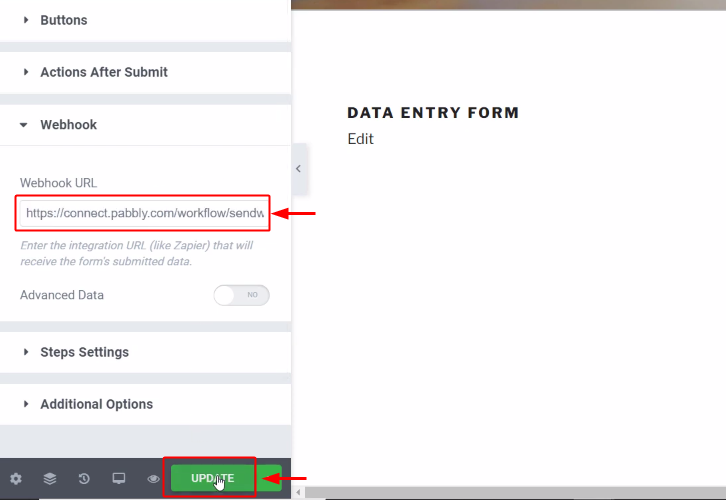
Now, paste the copied webhook URL in the field given and then click ‘Update’.
Step 6: Test the Response in Pabbly Connect Dashboard
We are halfway through setting up the trigger for Elementor and Google Sheets integration. So, let’s test the Elementor trigger by making a test form entry.
(a) Capture Webhook Response
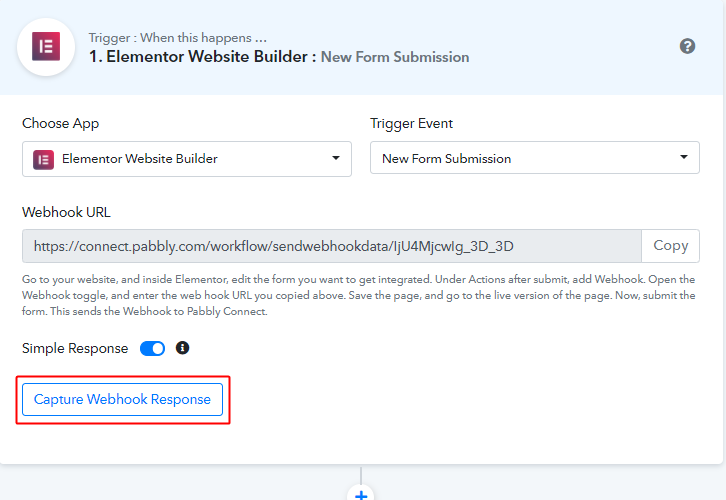
Don’t forget to click on the ‘Capture Webhook Response’ button available in the Pabbly Connect trigger window.
(b) Submit a Test Form
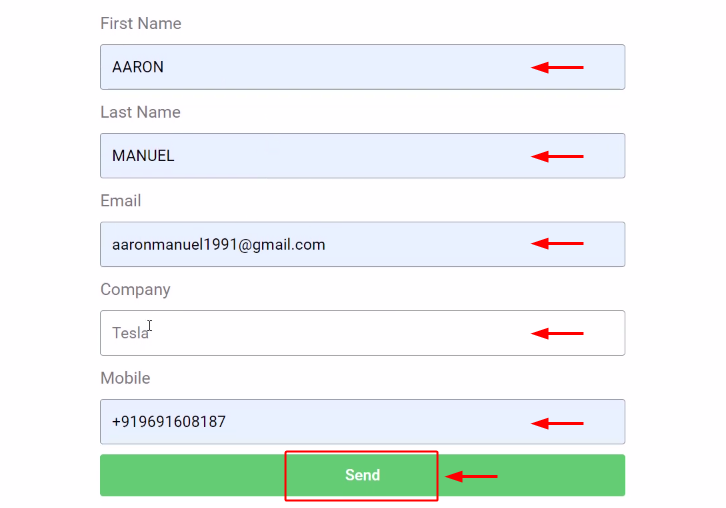
Now, open the connected form in a separate window and make a test entry.
Fill in all the required form fields and then click on ‘Send’.
(c) Check & Save the Trigger API Response
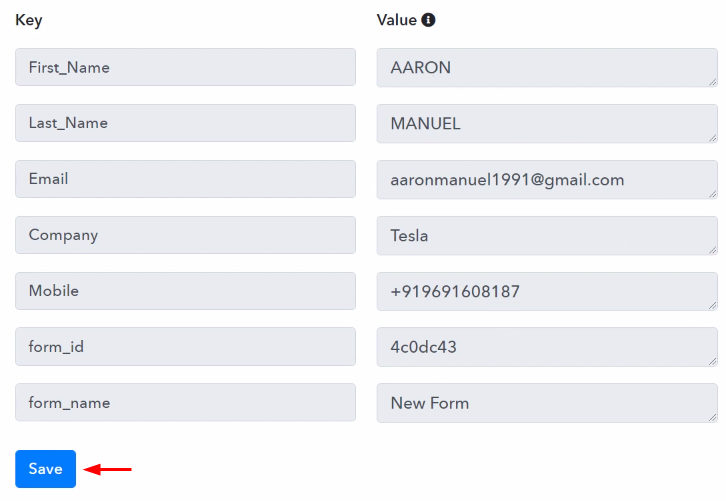
Check the sheet data in the trigger response window & save this data.
Step 7: Setting Action for Elementor to Google Sheets Integration
As we have gathered all the data to add form responses to Google Sheets. We can now proceed to use this data to perform our Google Sheets action. After that, all the form response will get automatically added on the connected Google Sheet.
(a) Create a Google Sheet
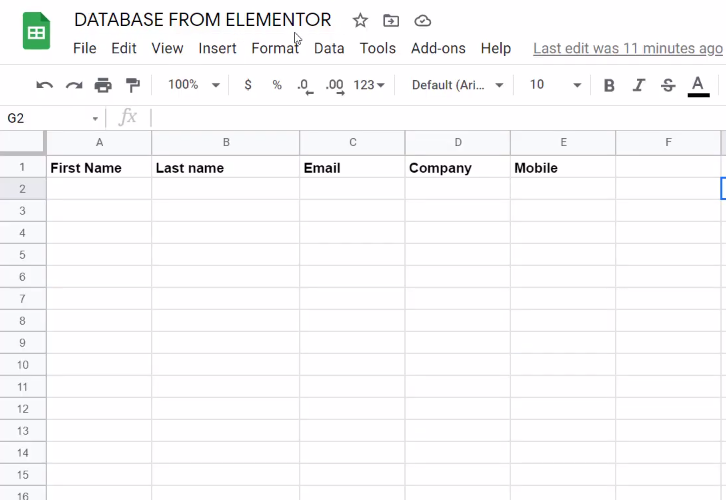
The very first step is to create a dedicated Google Sheet along with the columns values that we want to store from the form response.
(b) Select Application you want to Integrate
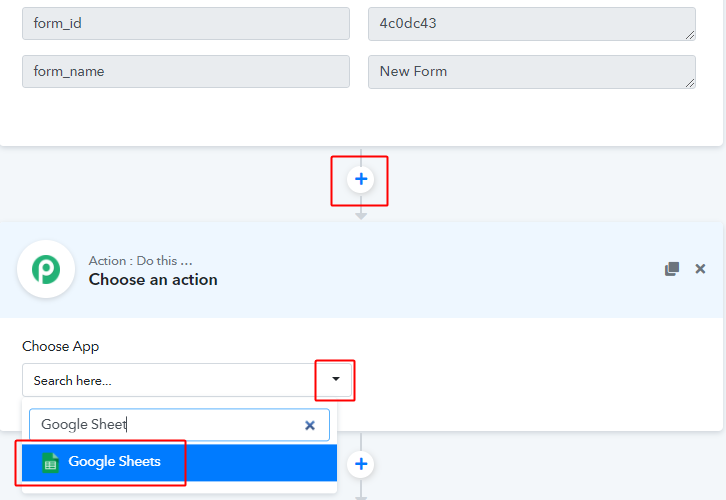
Hit the plus button next to your Elementor trigger.
Select the action app to integrate here as ‘Google Sheets’.
(c) Select Event & Connect with Google Sheets
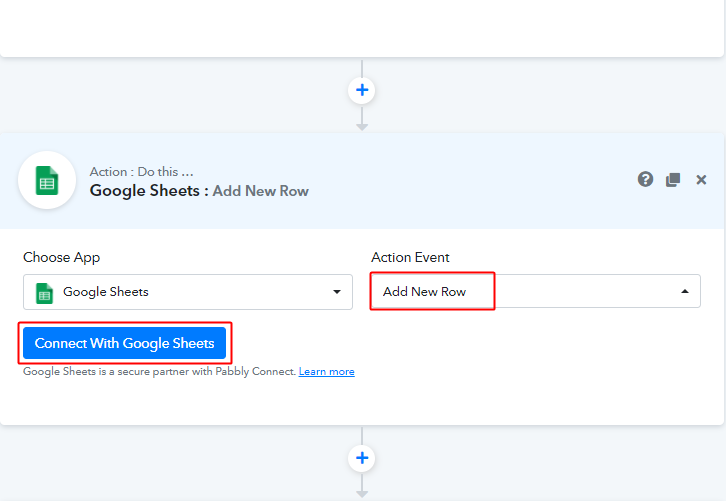
Next, select the event as ‘Add New Row’.
Lastly, click the ‘Connect with Google Sheets’ button.
Step 8: Connecting Google Sheets to Pabbly Connect
Our next step is to connect Google Sheets with Pabbly Connect. For this first, authorize your Google account to connect.
(a) Authorize Google Account
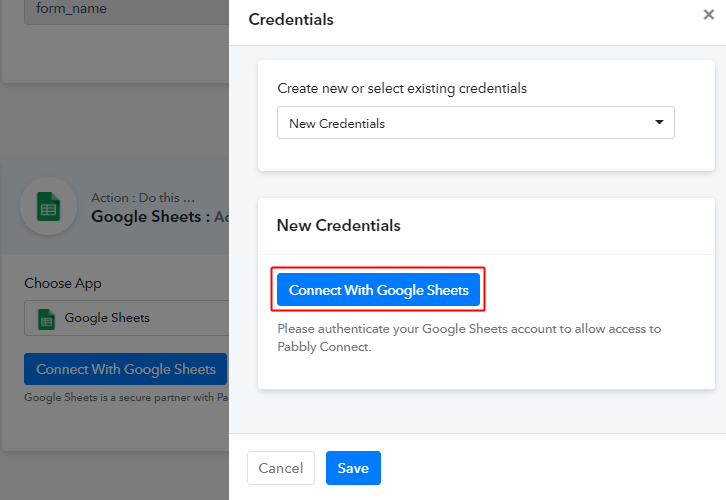
An authorization window will open up next. Authorize your Google account to connect with Pabbly Connect by allowing the required permissions.
(b) Select Spreadsheet & Map Fields
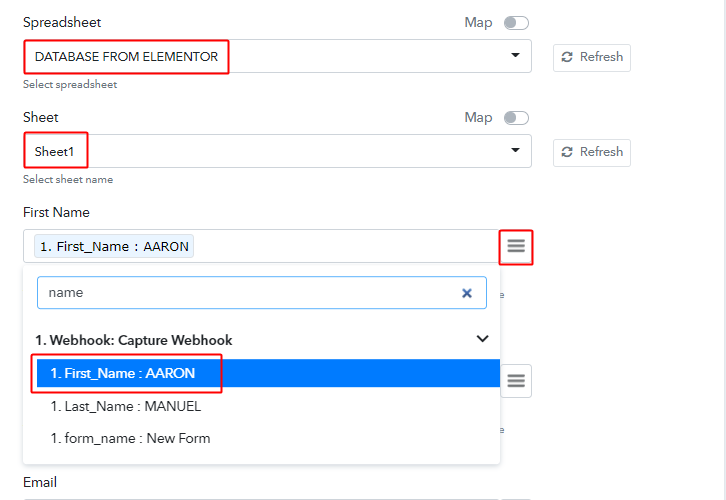
Further, select the spreadsheet that you created and the sheet within. Also, map the required spreadsheet column values with the gathered response.
To map simply click on the menu button (three horizontal lines) next to any field.
After that, search and select the response value from the trigger response.
Similarly, map all the required fields.
(c) Send Test Request
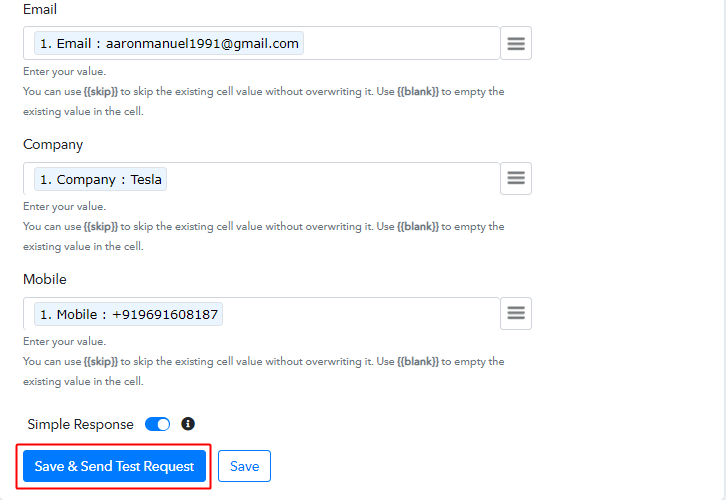
Further, click on the ‘Save & Send Test Request’ button to add the response values in the spreadsheet.
(d) Check & Save Response
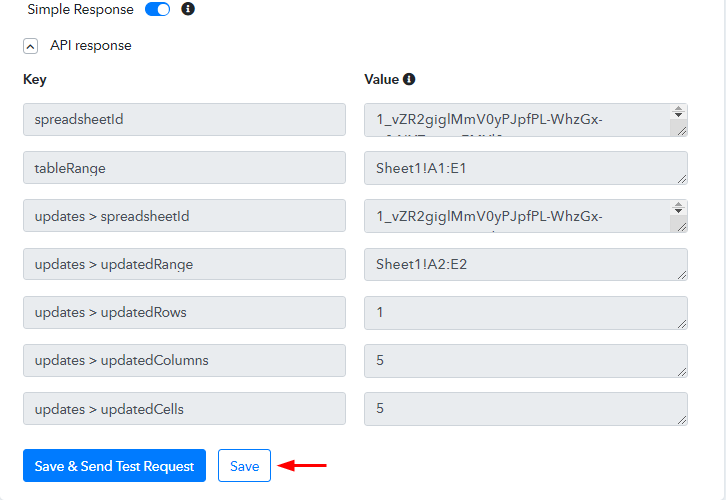
Certainly, you can check the Action API’s response in the action window. And, if there is some error while sending the data then the window will start showing you the error.
Finally, click on ‘Save’ to save the action API’s response.
Step 9: Check Response in Google Sheet
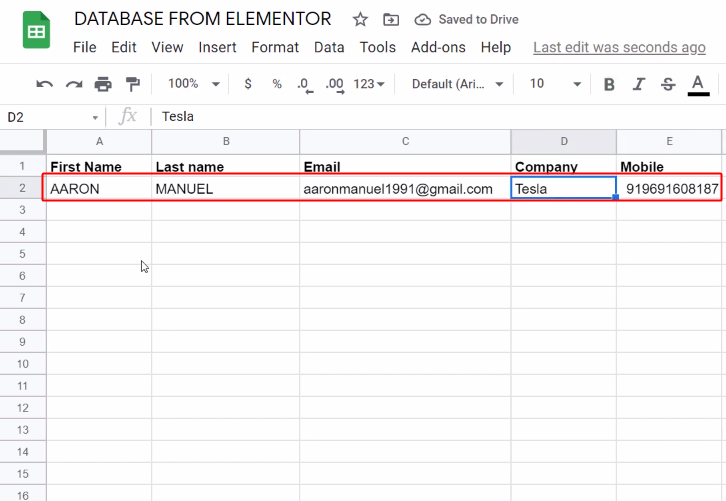
Also, you can check the form response’s entry on the connected Google Sheet.
Conclusion –
To sum up, this was all about ‘How to add form responses to Google Sheets ‘. Consequently, after completing this step by step procedure, your form response data will get listed into the Google Sheets automatically.
Meanwhile, you can try Pabbly Connect for FREE with all its premium features.
Also, leave your feedback in the comment section below for this integration.

